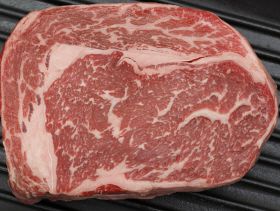 rage price of Japanese Black Wagyu calves increased 20 per cent year-on-year, to 503,407 yen/head (A$5,398) during the Japanese fiscal year 2013 (April 2013 to March 2014) – the second highest value since JFY2006 according to figures from the Agriculture and Livestock Industries Corporation – ALIC.
rage price of Japanese Black Wagyu calves increased 20 per cent year-on-year, to 503,407 yen/head (A$5,398) during the Japanese fiscal year 2013 (April 2013 to March 2014) – the second highest value since JFY2006 according to figures from the Agriculture and Livestock Industries Corporation – ALIC.Meat and Livestock Australia said that the surge was largely due to tight supplies, with many calf breeders leaving the industry, challenged by the lack of successors, disease outbreak (Foot-and-Mouth in 2010) and increasing costs.
According to the Japanese Ministry of Agriculture, Forestry and Fisheries, the number of beef cattle farms, as of February 2014, declined 6.2 per cent from last year to 57,500 farms, with the number of female breeding stock reducing 3.8 per cent, to 595,000 head.
As a result, Japanese Black Wagyu calf saleyard throughput during JFY2013 was 2.9 per cent lower than the previous year, at 351,119 head.
Demand for Wagyu calves was also supported by relatively firm carcase prices, and lot-feeder interest. demand.
Alongside Wagyu, prices for F1 (commonly Wagyu and Holstein) and Holstein calves were also strong, averaging 296,514 yen (A$3,180) and 127,305 yen (A$1,365) per head, respectively.





